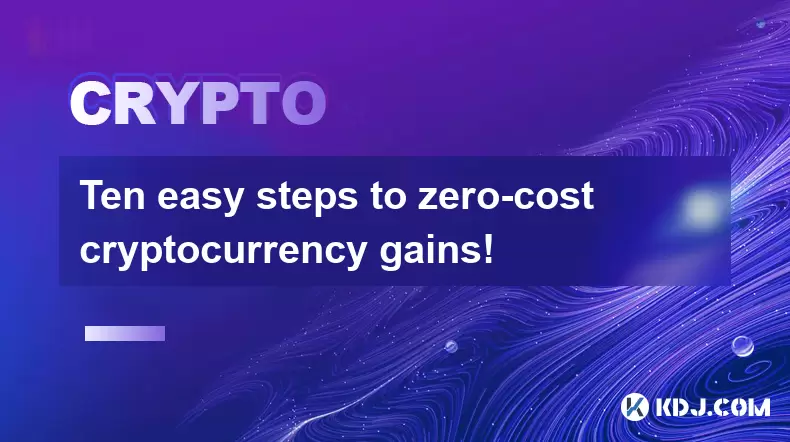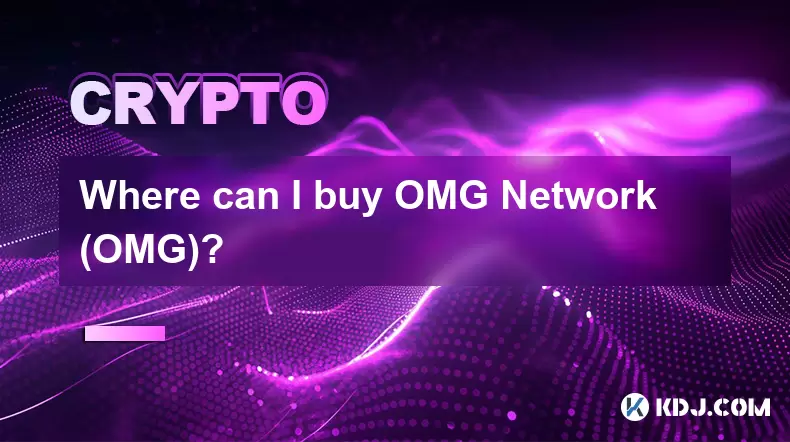-
 Bitcoin
Bitcoin $116400
-0.36% -
 Ethereum
Ethereum $4033
3.40% -
 XRP
XRP $3.302
-1.26% -
 Tether USDt
Tether USDt $1.000
-0.02% -
 BNB
BNB $796.1
1.67% -
 Solana
Solana $177.8
1.89% -
 USDC
USDC $0.9999
0.00% -
 Dogecoin
Dogecoin $0.2314
4.09% -
 TRON
TRON $0.3381
0.14% -
 Cardano
Cardano $0.7989
1.22% -
 Stellar
Stellar $0.4496
-1.84% -
 Chainlink
Chainlink $20.42
9.42% -
 Hyperliquid
Hyperliquid $41.17
0.88% -
 Sui
Sui $3.914
3.77% -
 Bitcoin Cash
Bitcoin Cash $584.7
1.52% -
 Hedera
Hedera $0.2632
-0.54% -
 Avalanche
Avalanche $24.09
3.40% -
 Ethena USDe
Ethena USDe $1.001
-0.02% -
 Litecoin
Litecoin $123.2
1.33% -
 Toncoin
Toncoin $3.318
-0.04% -
 UNUS SED LEO
UNUS SED LEO $8.984
-0.05% -
 Shiba Inu
Shiba Inu $0.00001323
2.85% -
 Uniswap
Uniswap $10.90
4.41% -
 Polkadot
Polkadot $3.999
3.34% -
 Dai
Dai $1.000
0.01% -
 Cronos
Cronos $0.1630
9.64% -
 Bitget Token
Bitget Token $4.484
0.82% -
 Monero
Monero $272.4
2.44% -
 Pepe
Pepe $0.00001173
6.03% -
 Aave
Aave $290.8
2.88%
Ten easy steps to zero-cost cryptocurrency gains!
Learn 10 easy ways to gain cryptocurrencies for free: airdrops, faucets, mining, staking, lending, referrals, bounties, apps, giveaways, and paper trading. #CryptoTips
Jun 03, 2025 at 01:56 am

In the world of cryptocurrencies, the allure of making gains without spending money is incredibly appealing. While it may sound too good to be true, there are indeed strategies that can help you achieve zero-cost cryptocurrency gains. This article will guide you through ten easy steps to potentially increase your crypto holdings without any initial investment. Let's dive into the methods that can help you start earning in the crypto space.
Step 1: Sign Up for Airdrops
Airdrops are one of the most straightforward ways to get free cryptocurrencies. Companies and projects often distribute free tokens to promote their new blockchain or cryptocurrency.
- Find a reputable airdrop website like Airdrop Alert or CoinMarketCap to stay updated on the latest opportunities.
- Create a wallet that supports the tokens you're interested in. Many airdrops require you to have a specific type of wallet.
- Follow the instructions for each airdrop. This usually involves signing up with your email, joining their social media channels, and completing simple tasks.
- Claim your tokens once the airdrop is completed. Make sure to transfer them to a secure wallet promptly.
Step 2: Participate in Faucets
Cryptocurrency faucets are websites or apps that give away small amounts of cryptocurrencies for completing simple tasks.
- Research reputable faucets like FreeBitcoin or Moon Bitcoin.
- Create an account on the faucet website and verify your email if required.
- Complete tasks such as solving captchas, watching ads, or playing games to earn tokens.
- Withdraw your earnings once you reach the minimum threshold set by the faucet.
Step 3: Engage in Crypto Mining
While mining can require significant initial investment, there are ways to get involved with minimal or no cost.
- Join a mining pool like Slush Pool or Antpool. These pools allow you to combine your computing power with others to increase your chances of earning rewards.
- Use cloud mining services like Genesis Mining or Hashflare, which allow you to rent mining power without buying expensive hardware.
- Utilize your existing hardware if it's suitable for mining. Software like CGMiner or EasyMiner can help you start mining with your current setup.
Step 4: Earn Through Staking
Staking involves holding cryptocurrencies in a wallet to support the operations of a blockchain network, in return for rewards.
- Choose a cryptocurrency that supports staking, such as Cardano (ADA) or Tezos (XTZ).
- Set up a staking wallet like Daedalus for Cardano or Tezos' official wallet.
- Transfer your coins to the staking wallet and follow the instructions to start staking.
- Monitor your rewards and withdraw them as needed.
Step 5: Take Part in Crypto Lending
Crypto lending platforms allow you to lend your cryptocurrencies to others in exchange for interest.
- Select a reputable lending platform like BlockFi or Celsius Network.
- Create an account and complete the KYC (Know Your Customer) process.
- Deposit your cryptocurrencies into the platform.
- Choose a lending term and start earning interest on your holdings.
Step 6: Participate in Referral Programs
Many cryptocurrency platforms offer referral programs where you can earn free tokens by inviting others to join.
- Find platforms with referral programs like Coinbase, Binance, or KuCoin.
- Sign up for an account if you haven't already.
- Generate your unique referral link from the platform.
- Share your link with friends and family. When they sign up and meet the platform's requirements, you'll earn referral bonuses.
Step 7: Engage in Bounties and Tasks
Crypto bounties and tasks are another way to earn free cryptocurrencies by completing specific tasks set by projects.
- Join platforms like Bounty0x or Gitcoin to find available bounties.
- Browse through the tasks and choose ones that match your skills and interests.
- Complete the tasks according to the project's guidelines.
- Submit your work and wait for approval. Once approved, you'll receive your reward in cryptocurrency.
Step 8: Use Crypto Faucet Apps
Mobile apps that act as faucets can be a convenient way to earn small amounts of cryptocurrencies on the go.
- Download a reputable faucet app like FreeBitco.in or Cointiply.
- Sign up for an account within the app.
- Complete tasks such as watching ads, playing games, or solving puzzles.
- Withdraw your earnings once you reach the minimum withdrawal amount.
Step 9: Participate in Crypto Giveaways
Many crypto influencers and projects host giveaways on social media platforms.
- Follow crypto influencers on platforms like Twitter, Telegram, or Discord.
- Join giveaway contests by following the specific rules, such as retweeting a post or joining a Telegram group.
- Enter the giveaway as instructed and wait for the results.
- Claim your prize if you win, and ensure you transfer it to a secure wallet.
Step 10: Learn and Trade on Paper Trading Platforms
While not directly earning you cryptocurrencies, paper trading can help you practice and hone your trading skills without financial risk.
- Sign up for a paper trading platform like eToro's demo account or TradingView.
- Practice trading with virtual funds to understand market dynamics and strategies.
- Analyze your performance and refine your trading approach.
- Apply your learned skills to real trading when you're ready, potentially increasing your gains.
By following these ten steps, you can start accumulating cryptocurrencies without any initial investment. Each method requires varying levels of effort and time, but they all offer the potential for zero-cost gains in the crypto world.
Frequently Asked Questions
Q1: Are airdrops safe to participate in?
A1: While many airdrops are legitimate, it's essential to research the project and the platform hosting the airdrop. Stick to reputable sources and be cautious of any airdrop that requires you to provide sensitive information or pay a fee.
Q2: Can I earn significant amounts through faucets?
A2: Faucets typically offer small amounts of cryptocurrencies, so it's unlikely to earn significant amounts solely through faucets. However, they can be a good way to accumulate small amounts over time, especially if you participate in multiple faucets.
Q3: Is crypto mining still profitable with regular home computers?
A3: Mining with regular home computers is less profitable today due to the increased difficulty and specialized hardware required for most cryptocurrencies. However, joining a mining pool or using cloud mining services can still be viable options for earning without significant upfront costs.
Q4: How often do crypto giveaways happen?
A4: Crypto giveaways are quite frequent, especially on social media platforms. Influencers and projects often host them to engage their communities and promote their tokens. Keeping an eye on relevant social media channels can help you stay updated on the latest giveaways.
Disclaimer:info@kdj.com
The information provided is not trading advice. kdj.com does not assume any responsibility for any investments made based on the information provided in this article. Cryptocurrencies are highly volatile and it is highly recommended that you invest with caution after thorough research!
If you believe that the content used on this website infringes your copyright, please contact us immediately (info@kdj.com) and we will delete it promptly.
- SHIB Price, Meme Coin Mania, and the 250x Potential Hunt
- 2025-08-09 16:30:13
- SOL, ETFs, and AI: Crypto's Triple Threat Sensation!
- 2025-08-09 17:10:12
- Tokenized Stock on Solana: SOL Price Reacts to Exodus's Bold Move
- 2025-08-09 17:10:12
- Cardano, Mutuum Finance, Millionaires 2025: A New Wave of Crypto Fortunes?
- 2025-08-09 17:50:12
- Meme Coins on Blockchains in 2025: Hype or the Future?
- 2025-08-09 16:50:11
- World Liberty Financial, Public Listing, and WLFI Tokens: A New York Minute on the Trump-Backed Crypto Venture
- 2025-08-09 16:50:11
Related knowledge

Where can I buy UMA (UMA)?
Aug 07,2025 at 06:42pm
Understanding UMA and Its Role in Decentralized FinanceUMA (Universal Market Access) is an Ethereum-based decentralized finance (DeFi) protocol design...

How to buy Storj (STORJ) tokens?
Aug 09,2025 at 07:28am
Understanding Storj (STORJ) and Its Role in Decentralized StorageStorj is a decentralized cloud storage platform that leverages blockchain technology ...

What is the best app to buy Nano (NANO)?
Aug 09,2025 at 03:35am
Understanding Nano (NANO) and Its Unique FeaturesNano is a feeless, instant cryptocurrency designed for fast peer-to-peer transactions. Unlike many ot...

Where can I purchase Siacoin (SC)?
Aug 08,2025 at 11:14am
Understanding Siacoin (SC) and Its Role in the Sia NetworkSiacoin (SC) is the native cryptocurrency of the Sia decentralized cloud storage platform, a...

How to sell my Ontology (ONT) tokens?
Aug 09,2025 at 06:08pm
Understanding Ontology (ONT) and Its Trading EcosystemBefore selling your Ontology (ONT) tokens, it's essential to understand the nature of the crypto...

Where can I buy OMG Network (OMG)?
Aug 08,2025 at 12:57pm
Understanding OMG Network (OMG) and Its PurposeThe OMG Network, originally known as OmiseGO, is a layer-2 scaling solution built on the Ethereum block...

Where can I buy UMA (UMA)?
Aug 07,2025 at 06:42pm
Understanding UMA and Its Role in Decentralized FinanceUMA (Universal Market Access) is an Ethereum-based decentralized finance (DeFi) protocol design...

How to buy Storj (STORJ) tokens?
Aug 09,2025 at 07:28am
Understanding Storj (STORJ) and Its Role in Decentralized StorageStorj is a decentralized cloud storage platform that leverages blockchain technology ...

What is the best app to buy Nano (NANO)?
Aug 09,2025 at 03:35am
Understanding Nano (NANO) and Its Unique FeaturesNano is a feeless, instant cryptocurrency designed for fast peer-to-peer transactions. Unlike many ot...

Where can I purchase Siacoin (SC)?
Aug 08,2025 at 11:14am
Understanding Siacoin (SC) and Its Role in the Sia NetworkSiacoin (SC) is the native cryptocurrency of the Sia decentralized cloud storage platform, a...

How to sell my Ontology (ONT) tokens?
Aug 09,2025 at 06:08pm
Understanding Ontology (ONT) and Its Trading EcosystemBefore selling your Ontology (ONT) tokens, it's essential to understand the nature of the crypto...

Where can I buy OMG Network (OMG)?
Aug 08,2025 at 12:57pm
Understanding OMG Network (OMG) and Its PurposeThe OMG Network, originally known as OmiseGO, is a layer-2 scaling solution built on the Ethereum block...
See all articles

























































































